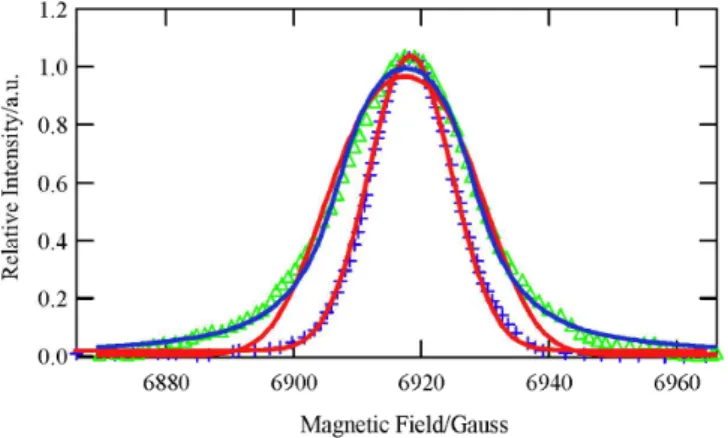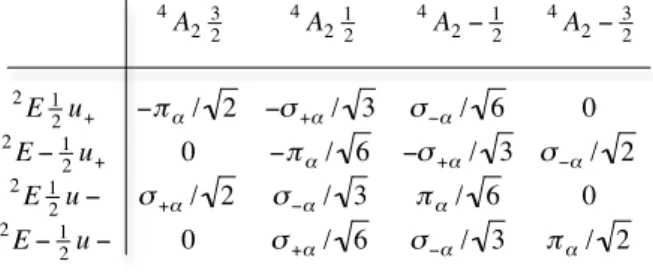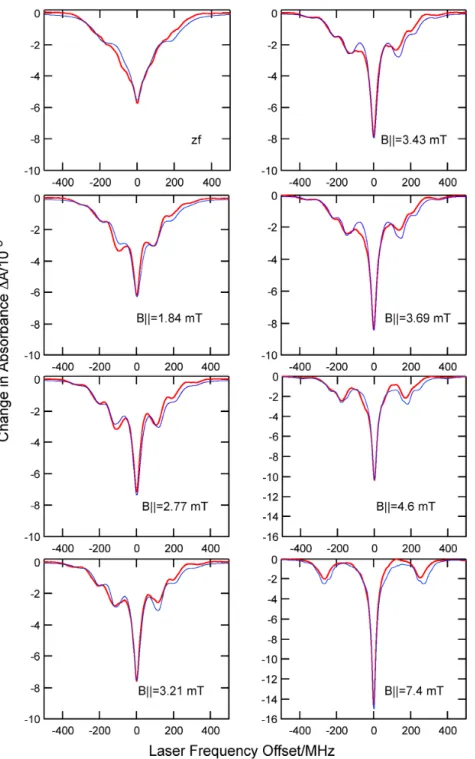Publisher’s version / Version de l'éditeur:
Physics Procedia, 3, 4, pp. 1577-1582, 2010-02-28
READ THESE TERMS AND CONDITIONS CAREFULLY BEFORE USING THIS WEBSITE. https://nrc-publications.canada.ca/eng/copyright
Vous avez des questions? Nous pouvons vous aider. Pour communiquer directement avec un auteur, consultez la première page de la revue dans laquelle son article a été publié afin de trouver ses coordonnées. Si vous n’arrivez pas à les repérer, communiquez avec nous à PublicationsArchive-ArchivesPublications@nrc-cnrc.gc.ca.
Questions? Contact the NRC Publications Archive team at
PublicationsArchive-ArchivesPublications@nrc-cnrc.gc.ca. If you wish to email the authors directly, please see the first page of the publication for their contact information.
NRC Publications Archive
Archives des publications du CNRC
This publication could be one of several versions: author’s original, accepted manuscript or the publisher’s version. / La version de cette publication peut être l’une des suivantes : la version prépublication de l’auteur, la version acceptée du manuscrit ou la version de l’éditeur.
For the publisher’s version, please access the DOI link below./ Pour consulter la version de l’éditeur, utilisez le lien DOI ci-dessous.
https://doi.org/10.1016/j.phpro.2010.01.224
Access and use of this website and the material on it are subject to the Terms and Conditions set forth at
Probing hyperfine interactions in 53Cr(III) doped Al2O3 by spectral
hole-burning in low magnetic fields
Riesen, Hans; Szabo, Alex
https://publications-cnrc.canada.ca/fra/droits
L’accès à ce site Web et l’utilisation de son contenu sont assujettis aux conditions présentées dans le site LISEZ CES CONDITIONS ATTENTIVEMENT AVANT D’UTILISER CE SITE WEB.
NRC Publications Record / Notice d'Archives des publications de CNRC:
https://nrc-publications.canada.ca/eng/view/object/?id=b86839c1-7e4d-4615-9a19-7aeab72dc32b https://publications-cnrc.canada.ca/fra/voir/objet/?id=b86839c1-7e4d-4615-9a19-7aeab72dc32b
Physics Procedia 00 (2009) 000–000
www.elsevier.com/locate/XXX
Proceedings of HBSM 2009
Probing hyperfine interactions in
53Cr(III) doped Al
2O
3by spectral
hole-burning in low magnetic fields.
Hans Riesen
a* and Alex Szabo
aSchool of Physical, Environmental and Mathematical Sciences, The University of New South Wales, ADFA, Northcott Drive, Canberra, ACT 2600, Australia
b
Institute for Microstructural Sciences, National Research Council of Canada, 1200 Montreal Road, Ottawa, Ontario K1A 0R6, Canada Received 10 November 2009; revised 20 November 2009; accepted 20 November 2009
Abstract
We report transient spectral hole-burning experiments conducted in the R1(±1/2) line of 53-chromium(III) doped Al2O3 in zero
field and low magnetic fields B||c at 3 K. These facile experiments enable, in principle, the simultaneous determination of the hyperfine coupling parameters for both the 4A2 ground state and the E (2E) excited state, and in both directions to the crystal
c-axis. In order to determine these parameters we have applied a global fit by simulated spectra to the experimental data and good agreement between calculated and measured hole-burning patterns is achieved. The relevant resulting parameters for the E (2
E)
excited state are A||=18±4 MHz and A⊥=40±4 MHz. © 2009 Elsevier B.V.
PACS: 78.47.nd
Keywords: transient spectral hole-burning; ruby; 53-chromium(III); hyperfine interaction
1. Introduction
Ruby (Al2O3/Cr(III)) has played an important role as an archetypal system for the spectroscopy of impurity ions in insulators over the last 140 years. Major milestones in this field include Becquerel’s report of the so-called R-lines (4A22E transitions) in 1870 [1]; Sugano and Tanabe’s detailed paper on ligand field theory in 1958 [2]; Maiman demonstration of the first laser action in 1960 [3]; Kurnitt, Abella and Hartman report on the first observation of photon echo experiment in the solid state in 1964 [4]; Szabo’s first fluorescence line narrowing and first transient spectral hole-burning experiment in the solid state in 1971 and 1975, respectively, [5,6] which was followed by detailed investigations by a range of hole-burning experiments [7-15]; Macfarlane et al.’s photon-echoes in the superhyperfine limit in 1991 [16]; and Riesen et al.’s observation of side-hole to anti-hole conversion caused by population storage in the ground state in 2007 [17]. The stable isotopes 50Cr, 52Cr, 53Cr and 54Cr occur
*Corresponding author. Tel.: +61-2-6268-8679; fax: +61-2-6268-8017. E-mail address: h.riesen@adfa.edu.au
Physics Procedia 3 (2010) 1577–1582
www.elsevier.com/locate/procedia
doi:10.1016/j.phpro.2010.01.224
with natural abundancies of about 4.3, 83.8, 9.6 and 2.3 %, respectively. The 53Cr is the only stable isotope with a nuclear spin (I=3/2). Hence in standard ruby samples the 52Cr(III) ion dominates most optical spectroscopy. Nevertheless, the 53Cr(III) ion can be observed in laser spectroscopy and the R1-line is blueshifted by 3.6 GHz in comparison with the 52Cr(III) ion [13]. Thus it is not surprising that the 52Cr isotope has received most attention in Al2O3/Cr(III), and little work has been conducted on the I=3/2 53Cr(III) isotope in the Al2O3 host. In some very early work, Geschwind et al. [18] investigated spin-lattice relaxation rates and the hyperfine structure in the
E
(2E) state of a Al2O3 sample doped with Cr enriched to 92 % 53Cr, by optical-radiofrequency double resonance experiments and they concluded that the hyperfine coupling constant A|| is <6 MHz in theE
(2E) level. Geschwind et al. [18] could not estimate a value for A⊥ as their work was conducted in a magnetic field parallel the c axis of about B||=0.7 T. Fig. 1 shows data adapted from this early work.Fig. 1. Optically detected EPR signal in the E (2E )state ofAl2O3/52Cr(III) (blue crosses) and Al2O3/ 53Cr(III) (green triangles) with fit lines
consisting of one and four Gaussians, respectively, (red lines) and the sum of four Lorentzians (blue line). The microwave frequency was at the fixed frequency of 23672 MHz for this experiment. The data has been adapted from reference [18].
An analysis of the data in Fig. 1 yields a FWHM of 13 Gauss (=44 MHz) for the Al2O3/52Cr data; fitting the sum of four Lorentzians or four Gaussians with this value for the FWHM of the linewidth to the Al2O3/53Cr data, estimates of A||=17 and 22 MHz, respectively, result for the
E
(2E) state.Szabo et al [13] reported nuclear spin-echo decay of the 27Al frozen core, surrounding 53Cr (in a ruby with 9.6% natural abundance), observed by Raman heterodyne detection. These experiments allowed the determination of Cr-Cr spin-flip times and it was concluded that indirect Cr-Cr-Cr-Cr spin-flipping is the major contributor to optical dephasing for ruby with Cr concentrations up to 0.05 wt% Cr2O3.
Some recent work reported photon-echoes in Al2O3/53Cr but no comprehensive data analysis was presented [19]. The present paper is a short report on our attempts to deduce the values of the hyperfine coupling constants in the
E
(2E) excited state by facile diode laser based transient spectral hole-burning in low magnetic fields B||c. 2. ExperimentBoules of Verneuil-grown (flame fusion) samples Al2O3 doped with 10 ppm Cr enriched to 95 % 53Cr were custom grown by Hrand Djevahirdjian SA, Monthey, Switzerland. The crystals were cut and polished parallel and perpendicular to the crystal c-axis with diamond-impregnated tools. For the transient hole-burning experiments, a crystal with a thickness of ∼7 mm was used with the magnetic field (provided by external Helmholtz coils <16 mT) parallel the c-axis in transverse geometry.
Spectral hole-burning experiments were conducted with an external cavity diode laser (Toptica DL100 with DC110 controller). To minimize effects of cross-relaxation and spin-lattice relaxation, pulsed (1 Hz repetition rate)
burning experiments were conducted by passing the laser through a mechanical shutter (Vincent Uniblitz VS14S1T0) that was controlled by a Uniblitz VMM-T1 driver/timer. The shutter was opened for 8 ms and the laser frequency was kept constant during the initial phase of the pulse (2 ms) and then swept over ~2 GHz within 2 ms by applying a triangular voltage ramp (Stanford Research Instruments synthesized function generator model DS345) to the piezoelectric element of the DL100. The laser was focused onto the sample after attenuation by polarizing films and neutral density filters with OD=1 to 3. The effective power level at the sample was less than 50 µW (average power density <50 mW/cm2). The samples were cooled by a Janis/Sumitomo SHI-4.5 closed-cycle refrigerator. The crystals were embedded with cry-con grease on the cold finger of the cryostat.
3. Results and Discussion
Fig. 2 shows the Zeeman pattern observed in σ-polarized transient hole-burning experiments in the R1(±1/2) line of the 52Cr(III) isotope in a 20 ppm standardruby sample in low magnetic fields B||c. Please note the relatively small change in optical density due to the very low chromium concentration and the fact that only shallow holes were burnt. The experimental data is in excellent agreement with the calculated patterns; in these simulations fast Cr-Cr electron spin-spin cross-relaxation in the 4A2 ground state between resonant and non-resonant ions has been assumed [17]. The Zeeman effect with B||c in Al2O3/52Cr is well described by the spin-Hamiltonians given in Eqs. (1) and (2). Note that Sz′ refers to an effective spin which is +1/2 and -1/2 for the lower (u+,-1/2) and upper (u–,+1/2) Zeeman component of
E
(2E) and consequently the g-factor of this level is negative.ˆ H (4A2)= g||µBB||Sz+ D Sz 2 −1 3S (S+ 1) (1) ˆ H (2E)= g||µBB||Sz ' (2) In Eqs. (1) and (2), µB is the Bohr magneton (13996 MHz/T), B|| is the magnetic field flux (in T) and D is the zero field splitting parameter for the 4A2 ground state (2|D|=11447 MHz). The data confirms a factor of gex||=-2.44 for the
E
(2E) state in agreement with early results (e.g. see Ref. [18]). The schematic in Fig. 2 rationalizes the three hole pattern observed in a magnetic field B||c.Fig. 2. Zeeman effect in the R1(±1/2) line in 20 ppm Al2O3/53Cr at 3 K as observed in σ-polarized transient spectral hole-burning experiments in
low magnetic fields. The red and blue line is observed and calculated, respectively. The schematic on the right hand side shows the transitions that lead to the pattern with sideholes at ±µBB||(gex||-ggs||). The magnetic field flux B||c for the traces from top to bottom was 0, 7.28 and 14.9 mT.
For the 53Cr enriched system the pattern is more complicated since the electronic system and the nuclear spin I=3/2 are coupled. Following spin-Hamiltonians adequately describe the 2E and 4A2 state in a magnetic field B||c.
ˆ H (4A2)= g||µBB||Sz+ D[ Sz 2 −1 3S(S+ 1)] + A||SzIz+ 1 2A⊥[ S+I−+ S−I+]− gIβNB||Iz+ Q'[ Iz 2 −1 3I (I+ 1)] (3) ˆ H (2E)= g||µBB||Sz ' + A||Sz'Iz+12A⊥[ S+I−+ S−I+]− gIβNB||Iz+ Q'[ Iz 2 −13I (I+ 1)] (4)
In Eqs. (3) and (4), A|| and A⊥ are the hyperfine coupling constants parallel and perpendicular to the c axis, respectively, gI is the nuclear g-factor, βN is the nuclear Bohr magneton and Q′ is the nuclear quadrupole interaction constant. Fig. 3 displays data of σ-polarized transient spectral hole-burning spectra in the R1(±1/2) line of the Al2O3/53Cr system at 3 K and in low magnetic fields B||c <7.4 mT in comparison with simulated spectra (again note the low change in optical density due to the low chromium concentration, 10 ppm, and the shallow hole depth).
A Matlab® based code was applied globally to the data illustrated in Fig. 3 in order to extract the hyperfine coupling constants of the
E
(2E) excited state. This analysis is, to a certain extent, difficult because of the relatively broad hole width observed in the Al2O3/53Cr system. For example, in contrast to the Al2O3/52Cr system (see Fig. 2) the resonant hole is not narrowed to less than 1 MHz at 7 mT. As a result the multidimensional fit surface has a number of relatively shallow minima. Nevertheless, fit attempts resulted in statistically significant values for A||(E
(2E)) and A⊥(E
(2E)). Some parameters for the calculation of eigenvalues and eigenvectors based on the spin-Hamiltonians of Eqs. (3) and (4) are well established. They include the 4A2 ground state parameters D=-5723.5 MHz, g||=1.983, A⊥(4A2)≈A||(4A2)=50.4 MHz [20], Q´=-0.85 MHz and theE
(2E) excited state parameter g||=-2.44. Initial estimates for the parameters A|| and A⊥ were used to evaluate the eigenvalues and eigenvectors of the secular determinant that results from Eq. (4). The approximation was then made that spin relaxation between levels in the excited and ground states is not restricted by some spin selection rules i.e. the same relaxation rate is assumed between different levels of the ground or the excited state. Moreover, it was assumed that for the optical transitions the selection rule ΔIz=0 is strictly obeyed. For the scaling of the spectra, a parameter, that described the product of the total burn fluence and the transition dipole strength, was used. Resulting transitions between the 16 (4A2) and 8 (E
(2E)) eigenstates were then calculated by using the matrix elements of the electric dipole operator, as given in Table 1, and a standard matrix transformation procedure. The accumulated pattern of transitions at discrete frequencies was then convoluted with a Lorentzian with a line width given as an empirical parameter for a particular magnetic field strength. The calculation was iterated until best least-squares agreement between experimental data and the calculated hole-burning spectrum was achieved. This procedure yielded the values A||(E
(2E)) =40±4 MHz, A⊥(E
(2E) )=18±4 MHz and thermalization of 60 % and 20 % for theE
(2E) excited and 4A2 ground states, respectively. As is illustrated in Fig. 3 the simulated spectra are in good agreement with the experimental data. The 60% thermalization in the excited state at 3 K is commensurate with the spin-lattice relaxation measurements of Geschwind et al [18]. The lesser 20% thermalization is due to the fact that cross-relaxation is harder to achieve in Al2O3/53Cr(III) than in Al2O3/52Cr(III) because of the larger number (4x more) of levels in the former system.Table 1. Matrix elements of the electric dipole operator, based on the odd-parity crystal field and spin-orbit interaction, between between the 4
A2
ground state and the 2
E excited state in ruby [21].
4 A23 2 4 A21 2 4 A2−1 2 4 A2−3 2 2 E1 2u+ −πα/ 2 −σ+α/ 3 σ−α/ 6 0 2 E−1 2u+ 0 −πα/ 6 −σ+α/ 3 σ−α/ 2 2 E1 2u− σ+α/ 2 σ−α/ 3 πα/ 6 0 2 E−1 2u− 0 σ+α/ 6 σ−α/ 3 πα/ 2
Fig. 3. Zeeman effect in the R1(±1/2) line of 10 ppm Al2O3/ 53
Cr at 3 K as observed in σ-polarized transient spectral hole-burning experiments in low magnetic fields of B||<7.5 mT. The red and blue line are observed and simulated (see text), respectively. The magnetic field flux B||c is indicated in the panels.
4. Conclusions
Hyperfine coupling in the ground and excited state leads to discrete sets of sideholes. Transient spectral hole-burning in low magnetic fields allows, in principle, the simultaneous determination of hyperfine coupling constants in the excited and ground states for transition metal ions in the solid state, given that the homogeneous hole width is narrow enough. The present report appears to be the first extensive investigation of hyperfine coupling in a transition metal ion by transient hole-burning. The value for A||(
E
(2E) )=18 MHz in Al2O3/53Cr is commensurate with the value deduced form the digitized data displayed in Fig. 1. Geschwind et al showed that a quenched value of A|| in theE
(2E) state is expected as the orbital hyperfine field, to a certain extent, cancels the contribution by the core polarization field. The contribution by the orbital hyperfine field can be estimated by Eq. (5) [22].Hhforb= 2µB 1 /r3 Δg (5)
However, it appears that this cancellation in the
E
(2E) level is less than originally reported [18] since the A|| value seems to be >6 MHz from the present experiments. The A⊥ value is close to the value of the spin-only 4A2 ground state and the present evaluation appears to be the first attempt to measure this quantity in the title system.We are presently in the process of conducting optical-rf double resonance hole-burning experiments in order to determine the hyperfine coupling constants in Al2O3/53Cr more accurately.
Acknowledgement
We thank the Australian Research Council for financial support of our research program. We are grateful to Hrand Djevahirdjian SA, Monthey, Switzerland, for providing us with boules of 10 ppm 53Cr doped corundum.
References
[1] A.E. Becquerel, La Lumiere, ses causes et ses effets (Paris: Didot, 1867-1868) [2] S. Sugano, Y. Tanabe, J. Phys. Soc. Jap. 13 (1958) 880.
[3] T.H. Maiman, Nature 187 (1960) 493.
[4] N. A. Kurnitt, I. D. Abella, S. R. Hartmann, Phys. Rev. Lett. 15 (1964) 567-568. [5] A. Szabo, Phys. Rev. Lett. 27 (1971) 323–326.
[6] A. Szabo, Phys. Rev. B 11 (1975) 4512.
[7] P.E. Jessop, T. Muramoto, A. Szabo, Phys. Rev. B 21 (1980) 926.
[8] P.E. Jessop, A. Szabo, in Laser Spectroscopy V, ed. A. McKellar, T. Oka, B.P. Stoicheff, Springer-Verlag (1981) p. 408. [9] P.E. Jessop, A. Szabo, Springer Series in Optical Sciences 30 (1981) 408.
[10] A. Szabo, J. Heber, Phys. Rev. A 29 (1984) 3452.
[11] A. Szabo, T. Muramoto, R. Kaarli, Opt. Lett. 13 (1988) 1075. [12] A. Szabo, T. Muramoto, Phys. Rev. A 39 (1989) 3992. [13] A. Szabo, T. Muramoto, R. Kaarli, Phys. Rev. B 42 (1990) 7769. [14] A. Szabo, R. Kaarli, Phys. Rev. B. 44 (1991) 12307.
[15] A. Szabo, J. Lumin. 56 (1993) 47.
[16] (a) J. Ganem, Y.P. Wang, D. Boye, R.S. Meltzer, W.M. Yen, R.M. Macfarlane, Phys. Rev. Lett. 66 (1991) 695;
(b) J. Ganem, Y.P. Wang, D. Boye, R.S. Meltzer, W.M. Yen, R. Wannemacher, R.M. Macfarlane, Phys. Rev. Lett. 66 (1991) 1649. [17] H. Riesen, B.F. Hayward, A. Szabo, J. Lumin. 127 (2007) 655.
[18] S. Geschwind, G.E. Devlin, R.L. Cohen, S.R. Chinn, Phys. Rev. 137 (1965) A 1087.
[19] V.V. Smartsev, A.M. Shegeda, A.V. Shkalikov, T.G. Mitofanova, Laser Phys. Lett. 5 (2008) 603.
[20] (a) A.A. Manekov, A.M. Prokhorov, Soviet. Phys. JETP 4 (1957) 288; (b) G.M. Zverev, A.M. Prokhorov, Soviet. Phys. JETP 7 (1958) 354. [21] M. Naito, J. Phys. Soc. Japan 34 (1973) 1491.
[22] A. Abragam, M.H.L. Pryce, Proc. Roy. Soc. (London) A205 (1951) 135.



